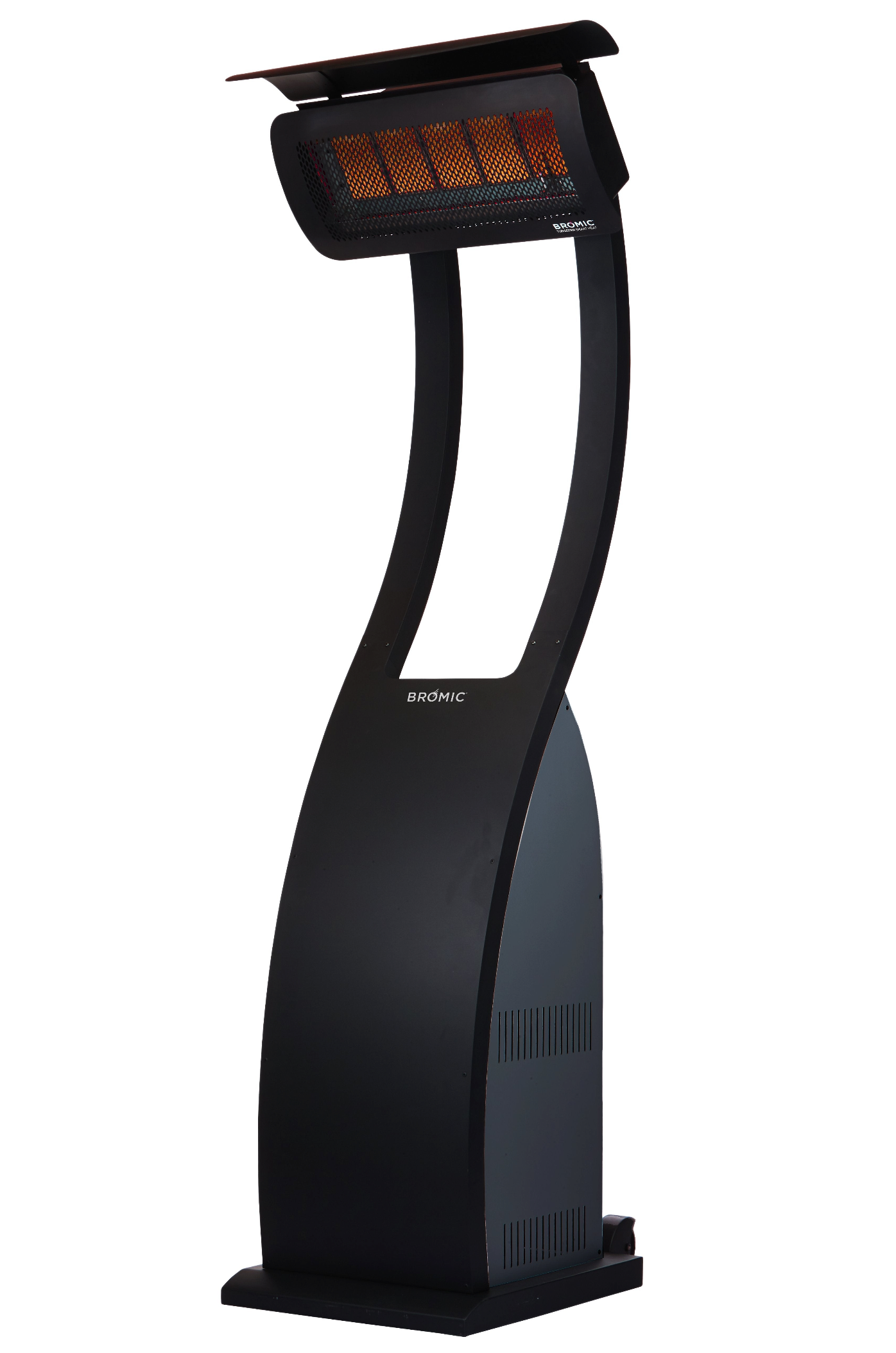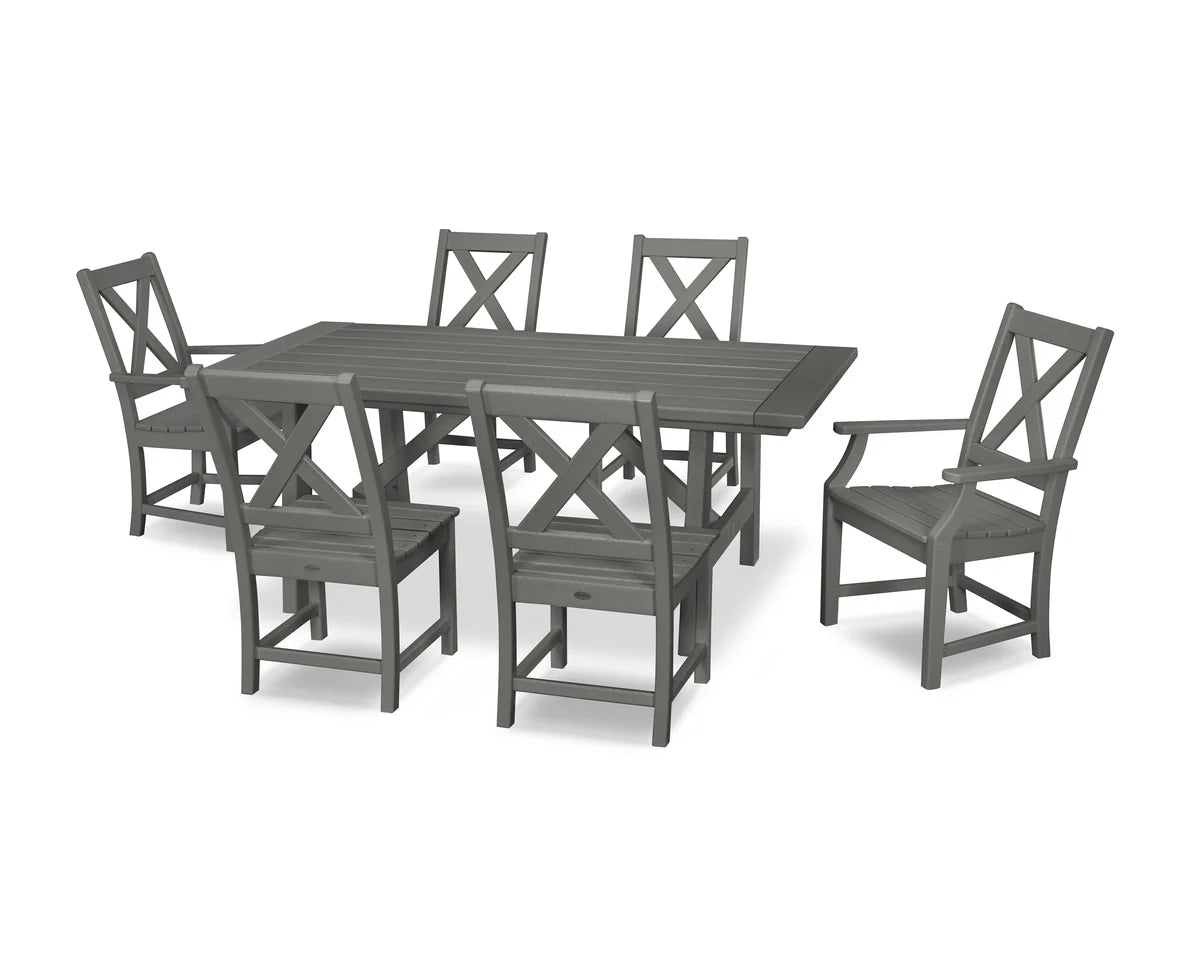Bringing Wood-Fired Pizza to Your Austin Backyard: A Guide to Outdoor Pizza Ovens
Imagine the warm, inviting scent of woodsmoke wafting through your backyard while you gather around with friends and family, sharing stories and laughter—all while enjoying delicious, homemade wood-fired pizza. It's not just a meal; it's an experience that brings everyone together. Setting up a wood-fired pizza oven might sound like a big task, but it's easier than it seems and worth every bit of effort. From the thrill of cooking in outdoor flames to the rustic charm it adds to your space, a wood-fired pizza oven can transform your backyard into the ultimate gathering spot. Let’s get started on how you can bring this delightful culinary journey right to your home.
To set up a wood-fired pizza oven in your backyard, first select a suitable location that's level and away from flammable materials. Then, choose an appropriate outdoor pizza oven—brick or stone models are excellent options—and make sure to follow all installation instructions as well as local building codes. With everything in place, you’ll be all set to enjoy the rich, authentic flavor of wood-fired pizza in the comfort of your home.
Why Choose a Wood-Fired Pizza Oven?
A wood-fired pizza oven is far more than just a cooking appliance; it’s an entire culinary experience bubbling with flavor and tradition.
The intense heat from a wood-fired oven can reach soaring temperatures of up to 900°F, which is a game-changer when it comes to cooking. This allows your pizzas to cook quickly—usually in one to three minutes—creating that perfect crispy crust while ensuring the toppings are beautifully melted and flavorful.
In fact, over 70% of culinary enthusiasts report a preference for wood-fired cooking due to its superior taste. This high-temperature cooking method not only enhances flavors but also promotes a unique texture that electric or gas ovens struggle to replicate. Think about it: that charred crust, slightly smoky notes—these enticing elements combine to create an authentic flavor profile that transports you back to a pizzeria in Naples.
While some may argue that modern electric ovens offer convenience and tech-savvy features, they simply can't match the authenticity and depth of flavor brought forth by a quality wood-fired oven. Sure, electric models might beep and buzz or even have built-in timers, but they fall short when it comes to creating that real deal rustic pizza that makes your taste buds sing.
Furthermore, using wood as fuel allows for versatility; depending on your choice of wood—whether it be cherry, oak, or hickory—you can greatly change the flavors of the foods you're cooking. Different woods impart different characteristics; for example, hickory tends to give off a stronger flavor compared to fruit woods like apple or cherry which provide a sweeter essence. So not only can you enjoy delicious pizzas, but you can experiment with various methods and flavors that keep your outdoor cooking exciting.
But beyond just taste and cooking performance, opting for a wood-fired pizza oven brings an element of ceremony into your dining experience. From the sensation of watching fire transform raw ingredients into mouthwatering meals to sharing those experiences with loved ones, this style of cooking represents more than just food—it embodies an art form cherished through ages.
Now, let’s consider how different oven types can enhance this flavorful journey you’ve begun.
Types of Outdoor Pizza Ovens
When it comes to selecting the perfect outdoor pizza oven for your backyard oasis in Austin, you'll find an array of options catered to different needs and preferences. From traditional brick and clay ovens to portable stainless steel models, each type offers its unique advantages.
Brick ovens have been used for centuries, and for good reason – they retain heat exceptionally well, resulting in crispy crusts and bubbling toppings that are hard to achieve with conventional ovens.
Clay ovens, also known as adobe or cob ovens, offer a more DIY approach but produce equally delicious results. These ovens can be built at home using clay, sand, and straw, creating a cozy and earthy aesthetic for your backyard. The thick walls of clay ovens ensure even heat distribution, making them great for not just pizzas but also bread, roasted vegetables, and even meats. The unique flavor imparted by cooking in a clay oven adds an extra dimension to your culinary creations.
When it comes to convenience and portability, portable stainless steel ovens take the lead. These sleek and modern ovens are easy to set up and transport, making them ideal for those who want to enjoy wood-fired pizza on camping trips or outdoor events. While they may not have the same insulation properties as brick or clay ovens, portable stainless steel versions still offer an authentic wood-fired taste without the commitment of a permanent installation. It all boils down to your lifestyle and how you plan to use your outdoor pizza oven – whether as a centerpiece in your backyard or a versatile companion on-the-go.
Feel inspired by the variety of outdoor pizza oven options available? Let's dive deeper into setting up your chosen oven and unlocking its full potential in the following section.
Setting Up Your Wood-Fired Pizza Oven
The first step in setting up your wood-fired pizza oven involves selecting the perfect spot for your new cooking companion. It's crucial to find a location that boasts a flat and sturdy surface, one that can easily support the weight of the oven, while still being conveniently close to your kitchen for easy access to ingredients. However, don’t forget safety—it's advisable to position the oven at least three feet away from any combustible material or indoor structures. This simple rule ensures you can enjoy those fiery flavors without any fire hazards lurking nearby.
Once you've scouted an ideal location, consider the base. Whether you choose to build or purchase a stand, make sure it’s not only sturdy but also heat-resistant. A well-constructed base is essential not only for stability but also for enhancing your grilling experience; you wouldn’t want your outdoor setup toppling over mid-pizza party! Opt for materials like concrete or brick to provide durability and safety against the high temperatures generated by your oven.
Installation Process
Now it’s time for the hands-on work—installing the oven itself. Begin by assembling the base according to the manufacturer's instructions; this part goes a long way in ensuring everything fits snugly together and functions well. Take your time here; a solid foundation means fewer mishaps later when you're focused on flipping pizzas rather than fixing equipment.
Once your base is set, position the oven carefully on top, checking that it is perfectly level. A wobbly oven can lead to uneven cooking, which no one wants during pizza night.
As part of this setup, if your model requires it, installing a chimney is essential for proper ventilation. Not only does it help channel smoke away from your cooking area, but it also aids in creating a controlled burn within the oven, providing that perfect temperature for pizza-making.
With everything securely in place and ready for action, it's almost time to create those wood-fired masterpieces in your backyard. Let’s explore how to effectively ignite those flames and maintain the ideal temperature for creating delicious pizzas.
Starting the Fire and Maintaining Heat
Lighting and sustaining a fire in your wood-fired pizza oven can easily feel daunting at first, but with practice, it becomes a delightful ritual that enhances your outdoor cooking experience. The key is not just to start the fire but to craft an environment where heat can flourish, facilitating the even cooking of your pizzas.
Lighting the Fire
When I first learned to fire up my pizza oven, my initial attempts were hit or miss. However, I discovered that the secret often lies in how you stack your materials.
You begin by stacking kindling in a pyramid shape right in the center of your oven—a tactile approach that feels oddly rewarding as you build your tiny fortress of flame.
Around this framework, crumpled newspaper or quality fire starters should be nestled delicately amidst the kindling. Then comes the moment of ignition—light it up and watch as sparks take flight! The flames will begin feasting on the small bits of wood, gaining strength. Gradually, it's time to add bigger pieces while being mindful not to overcrowd; this ensures good airflow and allows for robust combustion.
Maintaining Temperature
Once your fire is established, getting the desired heat level means strategically adding smaller logs every so often. A carefully controlled fire gives you that intense heat needed for crispy crusts and ooey-gooey cheese bliss. It's about finding a balance; if you toss too many logs in at once, you'll smother the flames and cool down the oven too quickly.
Keep an eye on your temperature throughout the cooking process. With practice, you’ll develop an intuition for when to add more wood based on how quickly you're cooking. It’s almost like having a conversation with your oven—pay attention and respond accordingly to keep that passionate heat flowing.
Starting and managing your wood fire isn’t just about practical steps; it’s about developing a nurturing relationship with it. Once mastered, you'll find joy in each sizzling session as friends gather around savoring pizzas hot out of your very own backyard wood-fired oven.
As we move forward in this culinary journey, let's explore how to achieve perfection with each pizza crafted under that beautiful heat.
Perfecting Your Pizzas
So, you've got your wood-fired oven all set up and your fire is roaring to the perfect temperature. Now comes the fun part - creating the most mouthwatering pizzas right in your backyard. One key tip for perfecting your pizzas is to ensure your toppings are fresh and high-quality. Whether it's a classic Margherita with fresh mozzarella or a decadent truffle-infused masterpiece, using top-notch ingredients will elevate your pizza game.
Another crucial aspect of achieving pizza perfection is mastering the art of dough-making. The dough is the foundation of any great pizza, and getting it just right can make all the difference. Experiment with different flour types, yeast ratios, and kneading techniques until you find the recipe that yields a crust that's crispy on the outside and delightfully chewy on the inside.
Now, let's talk about toppings - specifically, the age-old debate over pineapple on pizza. Some swear by the sweet and tangy addition, while others believe it has no place on a traditional pie. Ultimately, it comes down to personal preference. If you enjoy the unexpected burst of sweetness alongside savory ingredients like ham and cheese, then go ahead and embrace the controversial topping. Remember, pizza is all about creativity and enjoyment!
Perfecting your pizzas is akin to mastering any craft - it takes time, practice, and a willingness to experiment. Just like a painter perfects their brushstrokes or a musician hones their melody, becoming a pizza maestro requires patience and dedication. Embrace each burnt edge or overly cheesy slice as part of the learning process, and before you know it, you'll be churning out picture-perfect pies that rival those from your favorite pizzeria.
Frequently Asked Questions
What are some common mistakes to avoid when using a wood-fired pizza oven for the first time?
Common mistakes to avoid when using a wood-fired pizza oven for the first time include not adequately preheating the oven, which can lead to uneven cooking, and overloading the oven with too much wood, causing temperature fluctuations. It's crucial to reach the ideal temperature of around 700°F before placing your pizza inside for that perfect crust—statistics show that pizzas cooked at this temperature are 50% more likely to have a desirable texture compared to those cooked at lower temperatures. Additionally, neglecting to use a pizza peel results in sticking, while forgetting to monitor moisture levels can turn your gathering into a soggy disappointment.
How can I design my outdoor space to effectively accommodate a wood-fired pizza oven and dining area?
To effectively accommodate a wood-fired pizza oven and dining area in your outdoor space, consider a layout that allows for easy flow between cooking and dining. Aim for a distance of 8-12 feet between the oven and seating to ensure safety while still being social. Incorporate durable materials like stone or tile around the oven to withstand heat, and create a shaded dining area with a pergola or umbrella for comfort. Studies show that outdoor living spaces increase home value by up to 20%, making this a worthwhile investment for both enjoyment and property enhancement.
What types of food can be cooked in a wood-fired pizza oven?
Beyond pizza, these ovens excel at artisanal bread (baked at 500–600°F with steady heat), roasted meats (chicken, lamb) using indirect heat, and vegetables (charred peppers, caramelized onions). They also handle desserts like fruit tarts or cobblers at lower temperatures, and even slow-cooked dishes like stews or braised short ribs by retaining residual heat overnight.
How can I maintain my outdoor pizza oven properly?
To maintain your outdoor pizza oven properly, it's essential to follow a few key steps that will ensure its longevity and optimal performance. First, after each use, allow the oven to cool down completely before cleaning; then, use a brush to remove any ash or debris from the cooking surface and chimney. Regularly inspect the oven for cracks or damage, especially after extreme weather changes, and seal any imperfections with high-temperature refractory mortar if necessary. Additionally, cover your oven with a weather-resistant tarp when not in use to protect it from rain and UV exposure.
Are there safety tips for using a wood-fired oven outdoors?
Absolutely, safety is paramount when using a wood-fired oven outdoors. First and foremost, ensure that the oven is placed on a stable, non-flammable surface, away from any flammable materials such as dry grass or overhanging branches. Always have a fire extinguisher or a bucket of sand nearby in case of emergencies. It's essential to supervise the oven while it's in use, particularly if children or pets are around, as the exterior can become extremely hot. Additionally, make sure to use seasoned hardwood for fuel, as it burns cleaner and produces less smoke, reducing the risk of harmful fumes. Lastly, allow the oven to cool completely before cleaning or covering it to prevent any accidental burns or fire hazards.
What are some popular wood-fired pizza recipes?
When it comes to popular wood-fired pizza recipes, the classic Margherita remains a favorite, featuring a simple yet delicious combination of fresh mozzarella, San Marzano tomatoes, basil, and a drizzle of extra virgin olive oil. Another crowd-pleaser is the Pepperoni and Mushroom pizza, which combines spicy pepperoni slices with earthy mushrooms and gooey mozzarella for a savory delight. For those seeking something unique, the Fig and Prosciutto pizza offers a sweet and salty flavor profile with fresh figs, thinly sliced prosciutto, goat cheese, and arugula topped with balsamic glaze.
Can I build my own outdoor pizza oven?
Absolutely, you can build your own outdoor pizza oven! Many DIY enthusiasts have successfully crafted their own ovens using materials like firebricks, concrete, and clay. The process typically involves designing a sturdy base to support the oven, constructing an insulated dome for efficient heat retention, and ensuring proper ventilation for optimal cooking conditions. There are numerous online resources, including detailed plans and instructional videos, that guide you through each step of the construction process. Just be sure to check local building codes and regulations to ensure your oven is compliant and safe for use in your backyard. With some time, effort, and creativity, you'll be able to enjoy delicious wood-fired pizzas right from your own outdoor kitchen!
What accessories do I need for a wood-fired pizza oven?
To fully enjoy the experience of using a wood-fired pizza oven, you'll need several essential accessories that enhance both functionality and safety. Firstly, invest in a high-quality pizza peel, which allows you to easily slide pizzas in and out of the oven without burning yourself. A firewood storage rack is also crucial for keeping your wood dry and organized, ensuring optimal cooking conditions. Additionally, a heat-resistant glove will protect your hands when handling hot surfaces or adjusting logs in the fire. A pizza cutter and serving board are practical tools for slicing and presenting your delicious creations. Finally, consider a temperature gauge to monitor the oven's heat levels accurately, as achieving the perfect temperature is key to crafting that ideal Neapolitan-style crust.
Elevate Your Austin Backyard Gatherings with BBQ Outfitters
Bringing a wood-fired pizza oven to your Austin backyard is more than just a culinary upgrade—it’s a lifestyle enhancement that brings friends and family together for delicious, memorable meals. The warmth and smoky aroma of a wood-fired oven create an inviting atmosphere that transforms an ordinary evening into a festive gathering. From the first crackle of the fire to the final crispy crust, the entire experience delivers a sense of artistry and satisfaction that only outdoor pizza ovens can provide. And there’s no better partner to help you achieve this transformation than BBQ Outfitters. With their extensive selection of top-quality outdoor cooking equipment, expert advice, and friendly customer service, BBQ Outfitters ensures that every home chef finds the perfect oven to suit their space, style, and budget. By choosing BBQ Outfitters, you not only invest in a high-performing pizza oven that will delight your guests for years to come—you also join a community of passionate outdoor cooking enthusiasts ready to elevate your backyard into an irresistible gathering spot.











